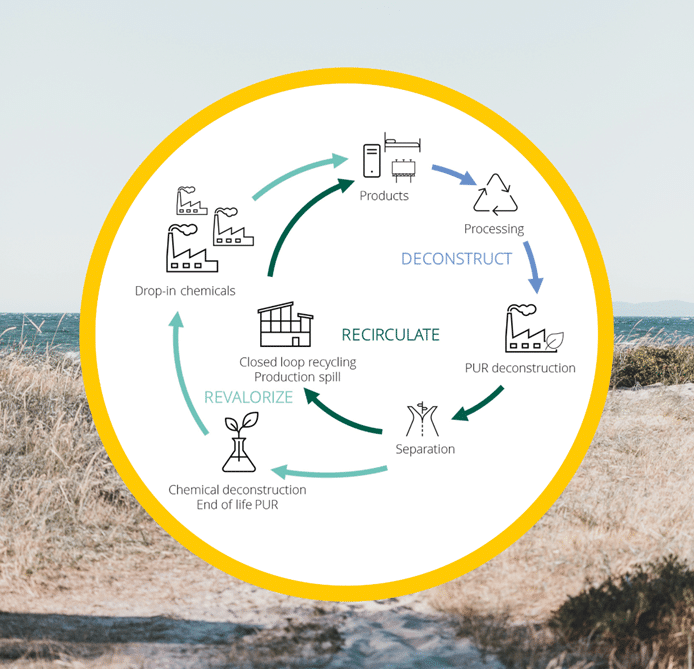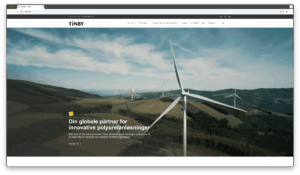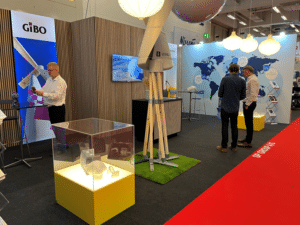PURfection, a new project collaboration between industry and research, aims to further develop and test groundbreaking Danish technology for the recycling of polyurethane. Due to polyurethane's durability and high performance, it is a widely used plastic type found in many different products, but after use, 95% of it ends up being incinerated or landfilled. The Innovation Fund is investing 12 million DKK in the project.
Polyurethane – also known as PUR – is used in everything from refrigerators, shoes, and mattresses to wind turbine blades and cars. This versatile plastic type makes up eight percent of global plastic production but is very difficult to recycle. Now, a number of large companies and knowledge partners are joining forces to make used PUR plastic recyclable, so it can replace fossil-based polyurethane.
It's like taking the flour out of a baked cake.
"The ambition with PURfection is to create circularity for PUR waste so that it can be transformed into new polyurethane of the same high quality as the original. However, this is not entirely straightforward, as it is roughly like taking the flour out of a cake that has already been baked, so it can be used for new baking. We believe that we can succeed in this by assembling a highly skilled team that covers the entire value chain. When successful, the technology can both eliminate a highly accumulating and problematic waste source, reduce the use of resources from fossil sources, and lower the CO2 footprint from PUR production," says project manager Signe Grønborg from the Danish Technological Institute. In addition to the Danish Technological Institute, which is the project leader and knowledge partner, the consortium includes Aarhus University, the Danish companies PLIXXENT, DanFoam, FLSmidth, Tinby A/S, HJ Hansen, and Eldan, as well as the City of Copenhagen and the materials science-based global company DOW.
Further developing groundbreaking technology
In PURfection, work continues on a remarkable technology that has previously been developed and patented by Aarhus University and Danish Technological Institute. Here, it was possible to replace new, virgin polyol with recycled polyol from a foam mattress. Polyols, along with isocyanate, are the two main components of polyurethane.
In the new project, the focus is on being able to reuse both of these two main components of PUR. This requires a complicated separation process of the two component types, but it will enable them to be used as new chemical building blocks across product types.
The project's focus is now also expanded to other PUR-containing products, including complex, mixed waste streams from, for example, discarded refrigerators and mattresses. The challenge here is that PUR has widely different chemical compositions from product to product. The next step will therefore be to be able to break down the polyol molecules from PUR into even smaller molecules, called monomers. This is an important step towards a raw material that is both pure and uniform across different types of PUR, so it can be used in various types of polyurethane.
Broad solution for PUR recycling
The Innovation Fund has invested DKK 12 million in the PURfection project, which aims to further develop and scale up the concept of the technology in all aspects of the value chain to a completly circular solution for PUR - from the production of PUR, collection and processing of PUR waste streams to the process of recreating basic chemicals from spent PUR. Therefore, it is essential that the project consortium encompasses all stages in the value chain for a circular solution in combination with leading researchers and technology developers. This involves representatives from the industry, including Dan-Foam, which produces mattresses and pillows made of PUR foam.
"Polyurethane is the main component in our mattresses and pillows. Therefore, the recyclability of that material plays a critical role in our green transition. By participating in PURfection, we gain access to innovation and knowledge throughout the PUR value chain. We believe that it will pave the way for a more direct and scalable solution, where we can recycle the building blocks of polyurethane into new quality products," says Tom Mikkelsen, Global Sr. Category Leader, Chemicals, at Dan-Foam.
To encompass a broad solution to the global problem of accumulating PUR waste, the project is working with two different strategies: One for the recycling of traceable materials, such as recycling of PUR trimmings directly in the company's own production. Another strategy is aimed at complex, mixed consumer waste containing polyurethane from many different products. Both solutions are based on the overall principle of extracting chemical building blocks from PUR with the aim of eliminating a global problematic waste source and replacing virgin materials in new PUR products for the benefit of both the economy and the climate.




